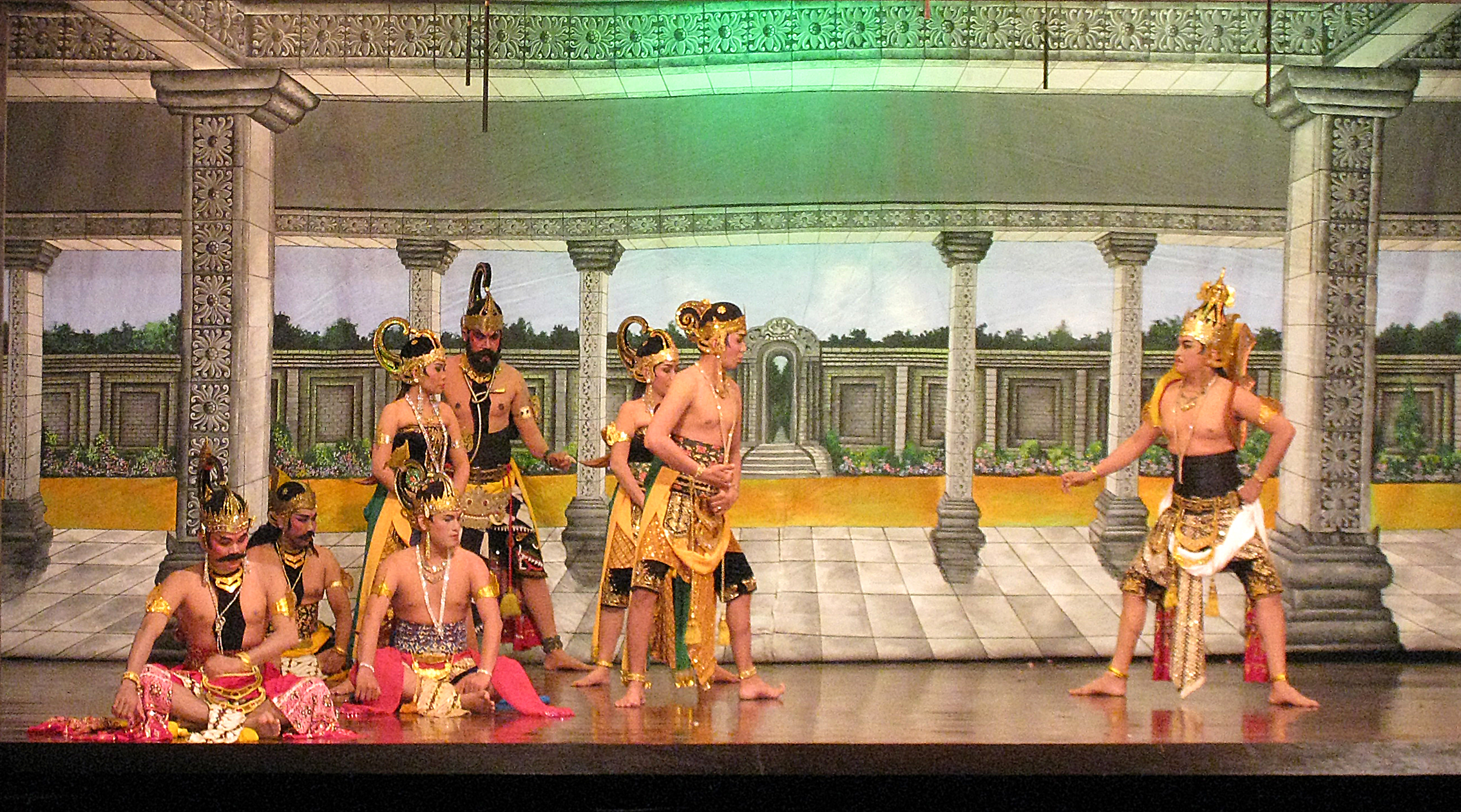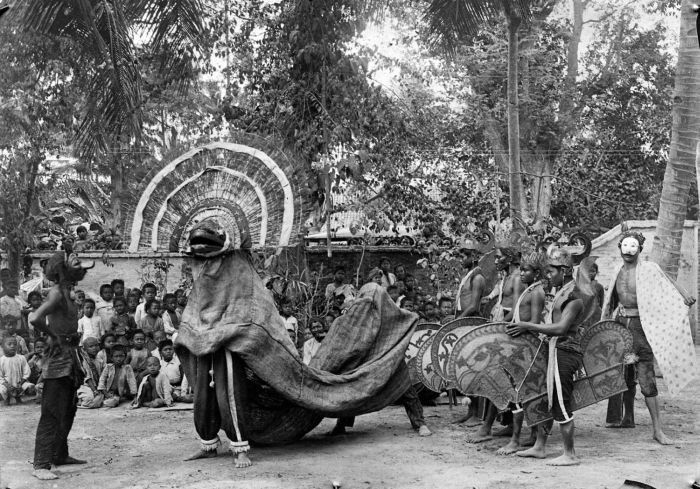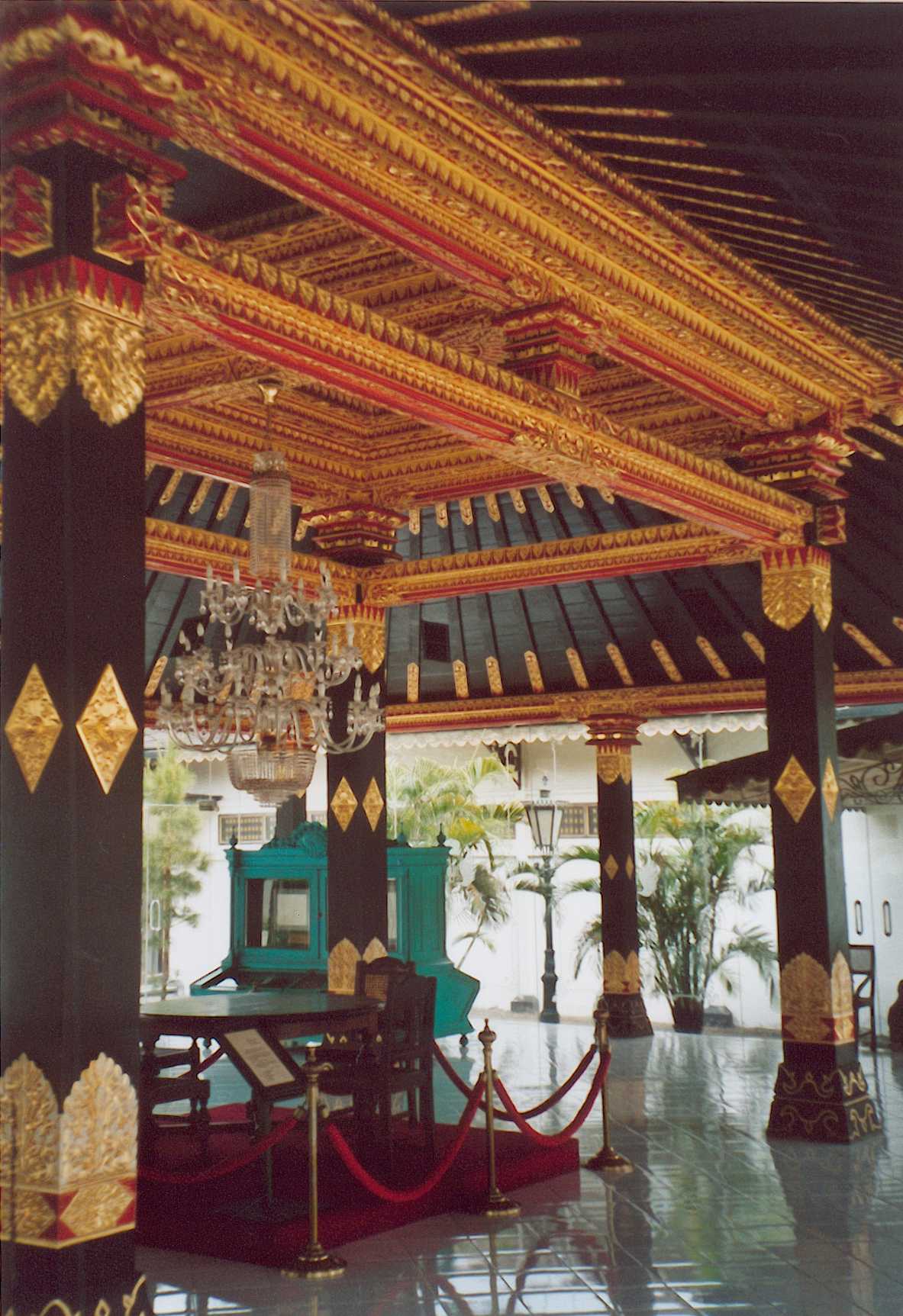|
Theatre In Indonesia
''Indonesian theatre'' is a type of Art of Indonesia, art in the form of drama performances that are staged on a stage, with a distinct Indonesian culture, Indonesian nuance or background. In general, theatre is an art that emphasizes the performing arts that are displayed in front of a large crowd. In other words, theater is a form of visualisation of a drama that is staged on the stage and watched by the audience. Indonesian theatre includes the performing arts of traditional theater and modern theatre located in the territory of Indonesia (also called Nusantara (archipelago), Nusantara). Some examples of Indonesian theater are Arja (drama), Arja, Wayang, Wayang wong, Lenong, Ludruk, Janger, Randai and others. Theatre in Indonesia can also be referred to as regional or ethnic theatre, because it originates and develops from 1,300 Ethnic groups in Indonesia, ethnic cultures in Indonesia. History Theatre performances in Indonesia have been going on for thousands of years. Most ... [...More Info...] [...Related Items...] OR: [Wikipedia] [Google] [Baidu] |
Randai
''Randai'' ( Jawi: رنداي) is a folk theater tradition of the Minangkabau ethnic group in West Sumatra, Indonesia, which incorporates music, singing, dance, drama and the martial art of silat. ''Randai'' is usually performed for traditional ceremonies and festivals, and complex stories may span a number of nights. It is performed as a theatre-in-the-round to achieve an equality and unity between audience members and the performers. ''Randai'' performances are a synthesis of alternating martial arts dances, songs, and acted-out scenes. Stories are delivered by both the acting and the singing and are mostly based upon Minangkabau legends and folktales. ''Randai'' originated early in the 20th century out of a fusion of local martial arts, story-telling, and other performance traditions. Men originally played both the male and female characters in the story, but since the 1960s, women have also participated. Gallery File:KITLV - 151106 - Demmeni, J. - Martial arts, probably r ... [...More Info...] [...Related Items...] OR: [Wikipedia] [Google] [Baidu] |
Reog Tanpa Mistis
or () is a traditional Indonesian dance in an open arena that serves as folk entertainment and contains some magical elements. The main dancer is a lion-headed person with a peacock feather decoration, accompanied by several masked dancers and Kuda Lumping. Reog is one of the performing arts from the northwestern region of East Java and Ponorogo is the region where Reog originated. The city gate of Ponorogo is decorated with warok and gemblak, two characters who were present at the time when Reog is performed. Reog is one of Indonesia culture that is still very strong with mystical elements and mysticism. In 2013, Reog Ponorogo tradition is recognized as National Intangible Cultural Heritage of Indonesia by the Indonesia Ministry of Education and Culture. On 3 December 2024, Reog Ponorogo performing art is inscribed on the UNESCO list of Intangible cultural heritage in need of urgent safeguarding. Etymology In the book of ''"Pedoman Dasar Kesenian Reog Ponorogo dalam Pen ... [...More Info...] [...Related Items...] OR: [Wikipedia] [Google] [Baidu] |
Indonesian Language
Indonesian (; ) is the official language, official and national language of Indonesia. It is a standard language, standardized variety (linguistics), variety of Malay language, Malay, an Austronesian languages, Austronesian language that has been used as a lingua franca in the multilingual Indonesian archipelago for centuries. With over 280 million inhabitants, Indonesia ranks as the list of countries by population, fourth-most populous nation globally. According to the 2020 census, over 97% of Indonesians are fluent in Indonesian, making it the largest language by number of speakers in Southeast Asia and one of the List of languages by total number of speakers, most widely spoken languages in the world.James Neil Sneddon. ''The Indonesian Language: Its History and Role in Modern Society''. UNSW Press, 2004. Indonesian vocabulary has been influenced by various native regional languages such as Javanese language, Javanese, Sundanese language, Sundanese, Minangkabau language, Min ... [...More Info...] [...Related Items...] OR: [Wikipedia] [Google] [Baidu] |
Lenong Betawi
''Lenong'' is a traditional theatrical form of the Betawi people in Jakarta, Indonesia. Description ''Lenong'' is a form of theatre traditional to the Betawi people of Jakarta, Indonesia. Dialogue is generally in the Betawi dialect. Actions and dialogue are often presented in a humorous manner on top of a stage known as a ''pentas tapal kuda'', so named for the way actors enter the stage from the left and right. Audiences sit in front of the stage. The number of performers is determined by the needs of the story. Male performers are referred to as ''panjak'', while female performers are known as ''ronggeng''. A performance is generally opened with a prayer, known as ''ungkup'', and a ritual offering before introducing the performers. '' Gambang kromong'' is one of the musical genres which may accompany a performance. Musicians may use various instruments, including flutes, gongs, accordions, or drums. The songs are traditionally quite formulaic, and several songs are common in ... [...More Info...] [...Related Items...] OR: [Wikipedia] [Google] [Baidu] |
Bali
Bali (English:; Balinese language, Balinese: ) is a Provinces of Indonesia, province of Indonesia and the westernmost of the Lesser Sunda Islands. East of Java and west of Lombok, the province includes the island of Bali and a few smaller offshore islands, notably Nusa Penida, Nusa Lembongan, and Nusa Ceningan to the southeast. The provincial capital, Denpasar, is the List of Indonesian cities by population, most populous city in the Lesser Sunda Islands and the second-largest, after Makassar, in Eastern Indonesia. Denpasar metropolitan area is the extended metropolitan area around Denpasar. The upland town of Ubud in Greater Denpasar is considered Bali's cultural centre. The province is Indonesia's main tourist destination, with a significant rise in Tourism in Bali, tourism since the 1980s, and becoming an Indonesian area of overtourism. Tourism-related business makes up 80% of the Bali economy. Bali is the only Hinduism in Indonesia, Hindu-majority province in Indonesia, ... [...More Info...] [...Related Items...] OR: [Wikipedia] [Google] [Baidu] |
Java
Java is one of the Greater Sunda Islands in Indonesia. It is bordered by the Indian Ocean to the south and the Java Sea (a part of Pacific Ocean) to the north. With a population of 156.9 million people (including Madura) in mid 2024, projected to rise to 158 million at mid 2025, Java is the world's List of islands by population, most populous island, home to approximately 55.7% of the Demographics of Indonesia, Indonesian population (only approximately 44.3% of Indonesian population live outside Java). Indonesia's capital city, Jakarta, is on Java's northwestern coast. Many of the best known events in Indonesian history took place on Java. It was the centre of powerful Hindu-Buddhist empires, the Islamic sultanates, and the core of the colonial Dutch East Indies. Java was also the center of the History of Indonesia, Indonesian struggle for independence during the 1930s and 1940s. Java dominates Indonesia politically, economically and culturally. Four of Indonesia's eig ... [...More Info...] [...Related Items...] OR: [Wikipedia] [Google] [Baidu] |
Mahabharata
The ''Mahābhārata'' ( ; , , ) is one of the two major Sanskrit Indian epic poetry, epics of ancient India revered as Smriti texts in Hinduism, the other being the ''Ramayana, Rāmāyaṇa''. It narrates the events and aftermath of the Kurukshetra War, a war of succession between two groups of princely cousins, the Kauravas and the Pandava, Pāṇḍavas. It also contains Hindu philosophy, philosophical and devotional material, such as a discussion of the four "goals of life" or ''puruṣārtha'' (12.161). Among the principal works and stories in the ''Mahābhārata'' are the ''Bhagavad Gita'', the story of Damayanti, the story of Shakuntala, the story of Pururava and Urvashi, the story of Savitri and Satyavan, the story of Kacha (sage), Kacha and Devayani, the story of Rishyasringa and an Ramopakhyana, abbreviated version of the ''Rāmāyaṇa'', often considered as works in their own right. Traditionally, the authorship of the ''Mahābhārata'' is attributed to Vyasa, Vy ... [...More Info...] [...Related Items...] OR: [Wikipedia] [Google] [Baidu] |
Ramayana
The ''Ramayana'' (; ), also known as ''Valmiki Ramayana'', as traditionally attributed to Valmiki, is a smriti text (also described as a Sanskrit literature, Sanskrit Indian epic poetry, epic) from ancient India, one of the two important epics of Hinduism known as the ''Itihasas'', the other being the ''Mahabharata''. The epic narrates the life of Rama, the seventh ''avatar'' of the Hindu deity Vishnu, who is a prince of Ayodhya (Ramayana), Ayodhya in the kingdom of Kosala. The epic follows Exile of Lord Rama, his fourteen-year exile to the forest urged by his father King Dasharatha, on the request of Rama's stepmother Kaikeyi; his travels across the forests in the Indian subcontinent with his wife Sita and brother Lakshmana; the kidnapping of Sita by Ravana, the king of Lanka, that resulted in bloodbath; and Rama's eventual return to Ayodhya (Ramayana), Ayodhya along with Sita to be crowned as a king amidst jubilation and celebration. Scholarly estimates for the earliest stage ... [...More Info...] [...Related Items...] OR: [Wikipedia] [Google] [Baidu] |
Balinese Culture
The Balinese people (, ) are an Austronesian people, Austronesian ethnic group native to the Indonesian island of Bali. The Balinese population of 4.2 million (1.7% of Indonesia's population) live mostly on the island of Bali, making up 89% of the island's population. There are also significant populations on the island of Lombok and in the easternmost regions of Java (island), Java (e.g. the regency of Banyuwangi). The Balinese are distinctive amongst Indonesian ethnic groups for their adherence to Balinese Hinduism rather than Sunni Islam. Origins The Balinese originated from three periods of migration. The first waves of immigrants came from Java and Kalimantan in prehistoric times and were of Proto-Malay stock. The second wave of Balinese came slowly over the years from Java during the Hindu period. The third and final wave came from Java, between the 15th and 16th centuries, about the same time as the conversion to Islam in Java, causing aristocrats and peasants to flee to B ... [...More Info...] [...Related Items...] OR: [Wikipedia] [Google] [Baidu] |
Javanese Culture
Javanese culture () is the culture of the Javanese people. Javanese culture is centered in the provinces of Central Java, Yogyakarta and East Java in Indonesia. Due to various migrations, it can also be found in other parts of the world, such as Suriname (where 15% of the population are of Javanese descent), the broader Indonesian archipelago region, Cape Malays, Cape Malay, Malaysia, Singapore, Netherlands and other countries. The migrants bring with them various aspects of Javanese cultures such as music, traditional dances and art of shadow play. The migration of Javanese people westward has created the Javanese culture in a small part of the northern coast that is distinct from the Sundanese people, Sundanese culture in the majority of West Java and Banten. Being the largest ethnic group, the Javanese culture and people influence Indonesian politics and culture, a process sometimes described as Javanisation. Literature Javanese literature tradition is among the earliest ... [...More Info...] [...Related Items...] OR: [Wikipedia] [Google] [Baidu] |
Wayang Golek
( ; is one of the traditional Sundanese puppet arts from West Java, Indonesia. In contrast to the art in other areas of Java that use leather in the production of , is a wayang art made of wood. is very popular in West Java, especially in the Pasundan land area. Today, has become an important part of Sundanese culture. On November 7, 2003, UNESCO designated the flat leather shadow puppet (), the flat wooden puppet (), and the three-dimensional wooden puppet () theatre, as a Masterpiece of the Oral and Intangible Heritage of Humanity. In return for the acknowledgment, UNESCO required Indonesians to preserve the tradition. Etymology The term is the Sundanese word in the ''lemes'' register, consisting of two words () and (). for "shadow"Mair, Victor H. ''Painting and Performance: Picture Recitation and Its Indian Genesis''. Honolulu: University of Hawaii Press, 1988. p. 58. or "imagination" and for "find wood". The words equivalent in Indonesian are and . In m ... [...More Info...] [...Related Items...] OR: [Wikipedia] [Google] [Baidu] |







